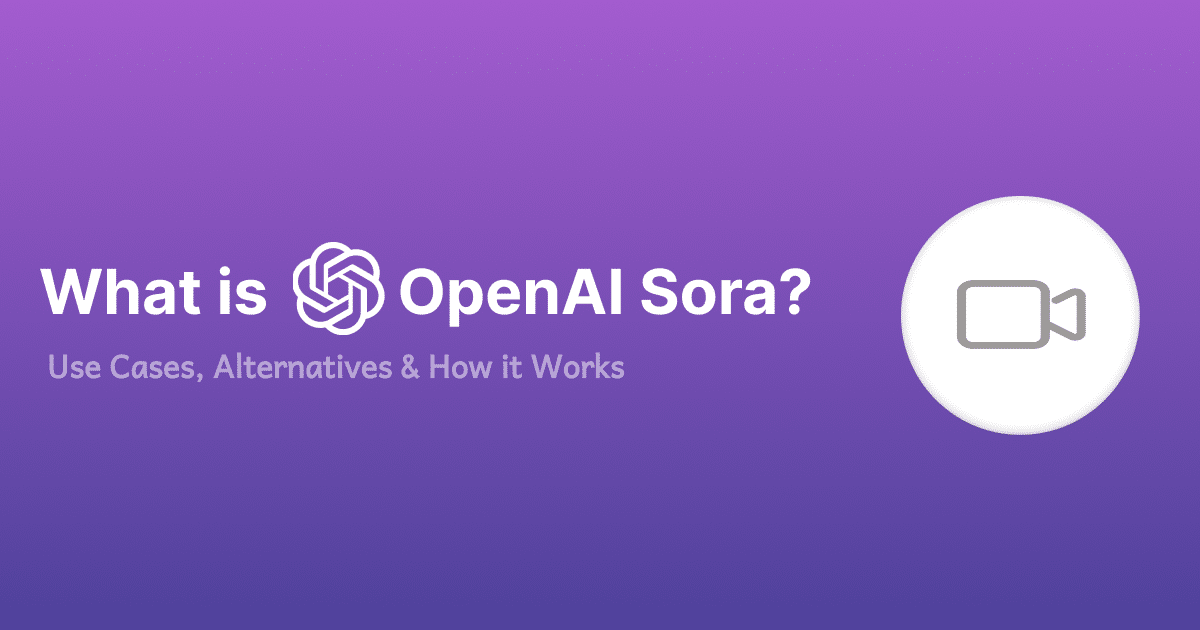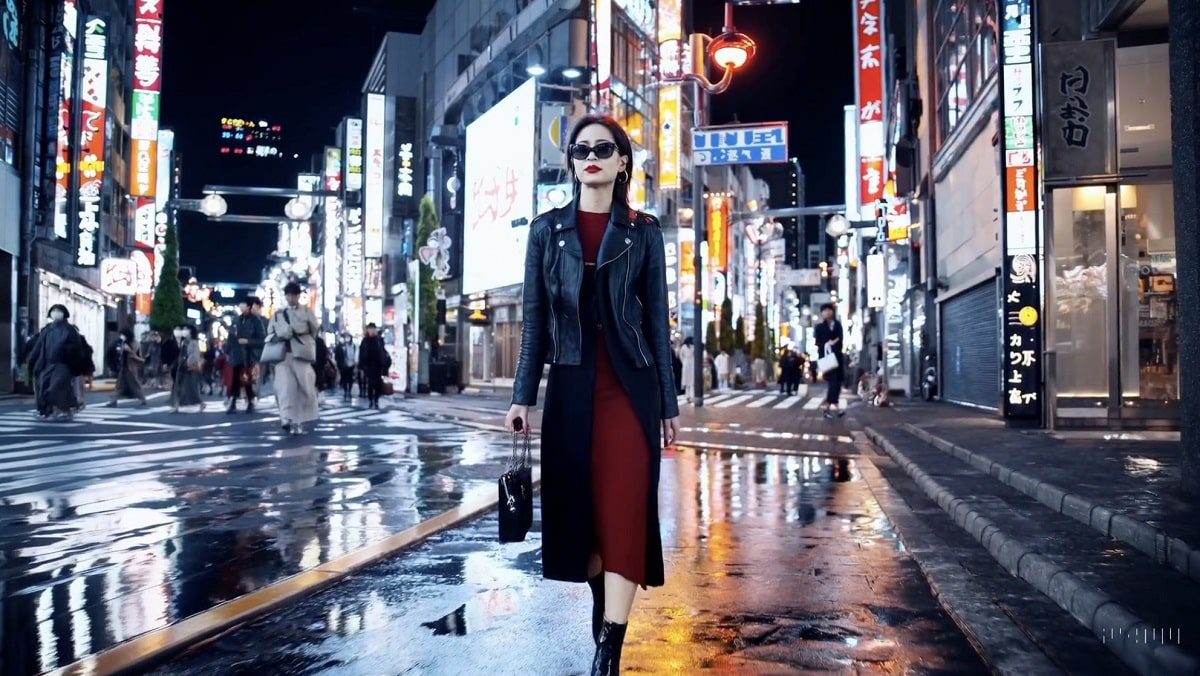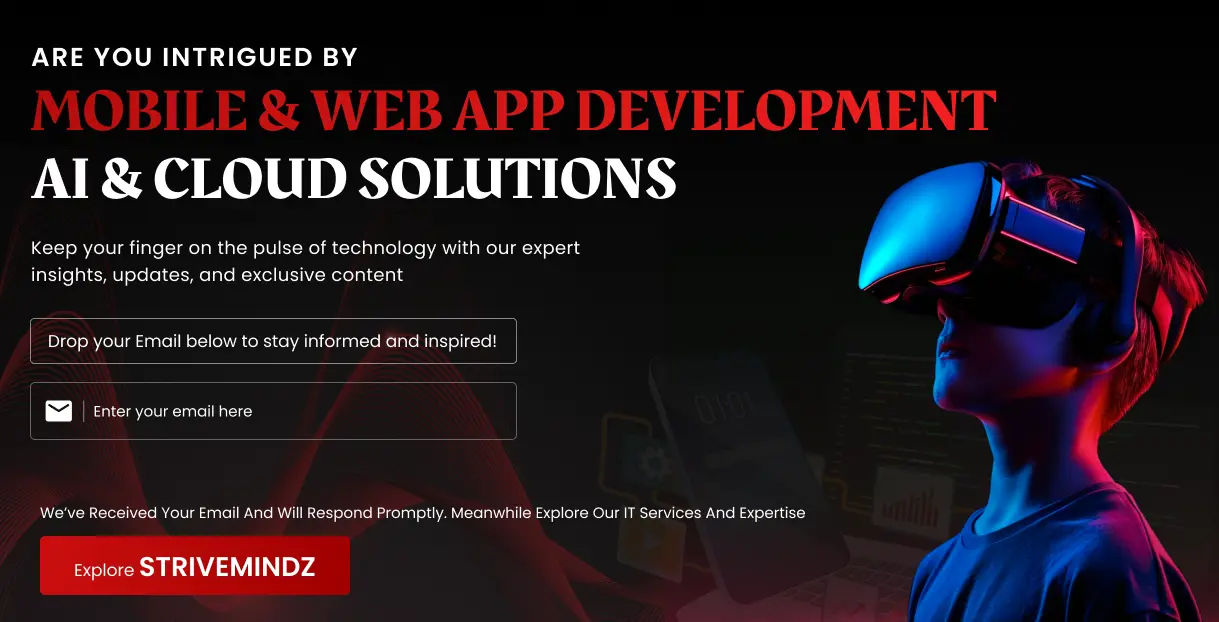What is OpenAI’s Sora? Use Cases, Alternatives & How it Works

Find out how OpenAI’s Sora will revolutionize multi-modal AI in 2024 with its groundbreaking text-to-video AI. Discover its capabilities, innovations, and potential impact.
The world of video creation is undergoing a significant transformation powered by the growing influence of Artificial Intelligence (AI). AI tools are not only simplifying the video editing process but also enabling entirely new possibilities, allowing users to go beyond pre-recorded footage and create videos directly from text descriptions. This blog post dives into the exciting world of Text-to-Video AI, specifically focusing on OpenAI’s offering, Sora, and comparing it to other prominent solutions in the market.
What is OpenAI’s Sora?
Sora is a cutting-edge “Text-to-Video AI model” developed by OpenAI, a leading research organization in the field of artificial intelligence. It has the remarkable ability to generate realistic and creative videos based on textual descriptions. Imagine describing a scene in vivid detail, and Sora can translate your words into a captivating video showcasing that scene, complete with movement, characters, and visual effects.
OpenAI Sora Examples with PROMPT
Here are some examples of OpenAI Sora’s capabilities:
Video Generated by OpenAI’s Sora
PROMPT: A stylish woman walks down a Tokyo street filled with warm glowing neon and animated city signage. She wears a black leather jacket, a long red dress, and black boots, and carries a black purse. She wears sunglasses and red lipstick. She walks confidently and casually. The street is damp and reflective, creating a mirror effect of the colorful lights. Many pedestrians walk about.
PROMPT: The animated scene features a close-up of a short fluffy monster kneeling beside a melting red candle. The art style is 3D and realistic, with a focus on lighting and texture. The mood of the painting is one of wonder and curiosity, as the monster gazes at the flame with wide eyes and open mouth. Its pose and expression convey a sense of innocence and playfulness as if it is exploring the world around it for the first time. The use of warm colors and dramatic lighting further enhances the cozy atmosphere of the image.
These are just a few examples, and as the technology continues to develop, we can expect to see even more impressive and creative videos generated by OpenAI Sora.
How Does OpenAI Sora Work?
Here’s an explanation of how OpenAI Sora works:
1. Diffusion Model: Imagine a video frame filled with static noise, like a snowy TV screen. That’s where Sora starts. It utilizes a diffusion model, a type of AI that gradually refines an image from noise into a clear and detailed representation.
2. Step-by-Step Refinement: Sora doesn’t create the entire video at once. Instead, it works frame by frame. For each frame:
- It starts with that noisy “static” image.
- It progressively reduces the noise and adds details based on your text description.
- This process happens in small steps, gradually refining the image with each step until it resembles the scene you described.
3. Understanding Your Text: To guide the refinement process, Sora needs to understand your text description. It uses techniques like natural language processing (NLP) to break down your text, analyzing the words, their relationships, and the overall context.
4. Learning from Data: Sora has been trained on a massive dataset of text-video pairs. This means it has “seen” many examples of how specific words and phrases translate to visual elements in videos. By analyzing this data, it learns the connection between language and visuals.
5. Generating the Video: Using the information from your text description and its knowledge from the training data, Sora refines the noisy frames step by step, ultimately generating a sequence of detailed images that form the final video.
Technical Note: While Sora uses a diffusion model, it specifically employs a diffusion transformer, which is a type of model well-suited for handling variable length and resolution data like videos. It also utilizes techniques like cascade diffusion and latent diffusion for efficient video generation.
Read also: How Generative AI is Evolving Software Development Industry in 2024
Sora’s limitations: what are they?
Despite its impressive capabilities, Sora, like any evolving technology, has certain limitations to consider:
1. Lack of Explicit Physical Understanding: While Sora can generate visually compelling videos, it currently lacks an explicit understanding of real-world physics. This means the model might struggle with:
- Accurate simulations of complex physical interactions: Precise movements and reactions based on the laws of physics might not always be perfectly depicted.
- Maintaining perfect continuity: Over longer videos, maintaining consistent object positions and behaviors across each frame can be challenging, leading to occasional inconsistencies.
2. Limited Customization and Control: Compared to some competitors, Sora offers a moderate level of customization. Users can provide detailed descriptions, including camera angles, lighting, and object placement, but the ability to fine-tune specific aspects might be more limited.
3. Early Stage of Development: Sora is still under active development, and its functionalities are continuously evolving. This means the user experience might not be as refined or user-friendly as some established platforms. Additionally, features like extensive integration with other tools or platforms might not be readily available yet.
4. Limited Availability and Pricing: Currently, OpenAI offers limited information regarding specific pricing models for Sora. As the technology matures and transitions into a commercially available product, a clearer pricing structure and plans are likely to be developed.
5. Ethical Considerations: As with any powerful AI technology, ethical concerns need to be considered, particularly regarding potential biases and the responsible use of generated content.
Despite these limitations, Sora remains a powerful and innovative tool with the potential to revolutionize how videos are created. As the technology continues to develop and address these limitations, it can become an even more valuable asset for various video creation needs.
Sora’s Use Cases: What are they?
Sora’s potential applications span various creative and practical domains, offering exciting possibilities for individuals and businesses alike. Here are some key use cases:
1. Content Creation
- Social media content: Create engaging and visually compelling videos for platforms like YouTube, TikTok, or Instagram, even without filming footage.
- Educational videos: Explain complex concepts or processes through visually engaging animations and simulations.
- Marketing and advertising: Generate product demos, explainer videos, or promotional content showcasing products or services in action.
- Storytelling and animation: Bring your stories and ideas to life with visually stunning animations and scenes.
2. Prototyping and Design
- Rapidly visualize and iterate on design concepts for products, environments, or user interfaces before investing in physical prototypes.
- Create storyboards or mockups for film, animation, or game development projects to explore different visual styles and storyboards.
3. Training and Simulation:
- Develop training simulations for various industries such as healthcare, aviation, or manufacturing, where realistic scenarios are difficult or expensive to create.
- Generate virtual environments for training purposes in areas like emergency response or military simulations.
4. Accessibility and Inclusivity
- Empower individuals with limited filming capabilities or resources to create video content and share their stories.
- Generate audio descriptions for videos, enhancing accessibility for individuals with visual impairments.
5. Research and Development:
- Generate data for research purposes in areas like computer vision, robotics, and artificial intelligence.
- Visualize scientific concepts or simulations for research papers or presentations.
The potential applications of Sora are likely to expand as the technology matures and becomes more widely accessible.
Sora’s Risks: What are they?
While Sora holds immense potential, it’s crucial to acknowledge the potential risks associated with this powerful AI tool. Here are some key areas of concern:
1. Misinformation and Deepfakes: Sora’s ability to generate realistic videos raises concerns about the creation and spread of misinformation and deepfakes. Malicious actors could use Sora to fabricate videos of events that never happened, potentially impacting public trust and causing widespread confusion.
2. Ethical Biases: AI models, including Sora, can inherit biases present in the data they are trained on. This can lead to the generation of discriminatory or offensive content based on factors like race, gender, or ethnicity. Mitigating these biases requires careful consideration of training data selection and ongoing monitoring of the generated content.
3. Privacy and Security: The widespread use of AI video generation tools like Sora raises questions about privacy and security. It might be difficult to distinguish between genuine and AI-generated videos, potentially leading to privacy violations and misuse of personal information. Additionally, ensuring the security of the underlying AI models and preventing unauthorized access is crucial to prevent malicious manipulation.
4. Job displacement: As AI video creation tools become more sophisticated, concerns regarding job displacement in certain sectors like animation or video editing might arise. It’s important to consider the potential impact on existing jobs and explore opportunities for retraining and upskilling individuals to adapt to the changing landscape.
5. Overdependence on AI creativity: While AI tools like Sora can be powerful creative aids, overdependence on them might stifle human creativity and imagination. It’s important to strike a balance between leveraging AI capabilities and maintaining human involvement in the creative process.
Addressing these risks requires a multi-pronged approach involving collaboration between technologists, policymakers, and the public. Open and transparent communication, ethical development practices, and robust regulatory frameworks are essential for ensuring the responsible and beneficial use of AI video generation tools like Sora.
How Can I Access Sora?
As of today, OpenAI has not publicly released Sora for general access. There is currently no official way to access Sora through a website or API.
Here’s a summary of the current access situation:
Limited access: OpenAI is currently granting access to a select group of individuals, including:
- Red teamers: These are security professionals who assess the potential risks and vulnerabilities of systems, and they are using Sora to identify potential areas for harm.
- Visual artists, designers, and filmmakers: OpenAI is seeking feedback from these creative professionals to understand how Sora can be most helpful in their work.
No public signup: There is currently no official public signup list for Sora.
Future availability: OpenAI has not yet announced any concrete plans for making Sora publicly available. However, they are actively developing the technology and may release it in the future, potentially with specific limitations or access controls.
It’s important to stay updated on OpenAI’s official communication channels, such as their website and social media platforms, for any announcements regarding future access to Sora. They might offer information on early access programs or public release schedules in the future.
How Will OpenAI Sora Change the Future?
OpenAI’s Sora represents a significant leap forward in the realm of AI-powered video creation. While still under development, its capabilities hold immense potential to reshape the way we create and consume visual content across various avenues:
1. Democratization of video creation: Sora empowers individuals with limited access to resources or filming capabilities to bring their visions to life as video content. This democratization of video creation can pave the way for new voices and perspectives to emerge.
2. Enhanced storytelling and communication: Sora offers new avenues for impactful storytelling in various fields, from education and training to marketing and entertainment. The ability to create visually engaging content from text descriptions can enhance communication and understanding across diverse audiences.
3. Revolutionizing design and prototyping: Sora’s potential applications in design and prototyping can significantly accelerate product development cycles and foster innovative ideas. Rapidly visualizing and iterating on concepts through AI-generated videos can streamline the design process and bring products to market faster.
4. New frontiers in research and exploration: Beyond the creative domain, Sora can facilitate scientific research by generating visual data for simulations or experiments, aiding researchers in exploring complex concepts and phenomena.
However, alongside the exciting possibilities, critical considerations must be addressed to ensure responsible and ethical utilization of this technology:
- Mitigating bias and misinformation: Rigorous development practices and transparent communication are crucial to minimize biases and prevent the spread of misinformation through AI-generated content.
- Addressing ethical concerns: Ongoing discussions and collaborations involving developers, policymakers, and the public are essential to establish ethical frameworks for the responsible use of AI video generation tools.
- Ensuring privacy and security: Robust measures to protect user privacy and prevent unauthorized access to AI models are necessary to maintain trust and prevent malicious manipulation.
As OpenAI continues to refine Sora and similar technologies mature, the future of video creation stands at a crossroads. By prioritizing ethical development, fostering open dialogue, and embracing responsible use, we can harness the potential of these tools to empower creativity, enhance communication, and unlock new possibilities across various fields.
Sora Alternatives: What Are They?
While Sora showcases impressive capabilities, it’s not the only player in the Text-to-Video AI field. If immediate access or a specific feature set is a priority, here are some noteworthy alternatives:
1. Deepomatic
- Focus: User-friendly interface with various customization options.
- Strengths: Easy to learn, suitable for beginners, offers free trial and tiered pricing plans.
- Considerations: Might not generate the same level of visual detail or complexity as Sora, depending on the plan chosen.
2. Synthesia
- Focus: Generating realistic human-like videos from text descriptions.
- Strengths: Produces highly realistic characters with emotions and expressions, various customization options.
- Considerations: Higher price point compared to some alternatives.
3. InVideo
- Focus: Creating short-form social media videos with various templates and editing tools.
- Strengths: User-friendly interface, free plan with basic features, easy for quick social media content creation.
- Considerations: Limited customization options for complex video concepts, not ideal for long-form video projects.
4. Runway
- Focus: Open-source platform offering various AI tools for creative exploration, including text-to-video generation.
- Strengths: Extensive customization options, open-source nature allows for community contributions and development.
- Considerations: Requires coding knowledge and familiarity with AI tools, steeper learning curve compared to user-friendly platforms.
5. Pika Labs
- Focus: AI video generation platform under development, showing promise for creating realistic videos.
- Strengths: Aims for high-quality visuals, offers beta access in limited capacity.
- Considerations: Still under development, limited access, and features might not be fully available yet.
Choosing the best alternative depends on your specific needs and priorities. Consider factors like desired level of customization, ease of use, pricing, and specific functionalities offered by each platform.
How Much Does It Cost to Create a Text-to-Video AI Platform Like SORA?
Creating a text-to-video AI platform like SORA requires a significant investment, and the cost can vary depending on several key factors:
Feature Set
A basic platform with core text-to-video functionality might start around $30,000. But if you envision a feature-rich platform like SORA with capabilities like:
- Diverse artistic styles (from photorealistic to cartoon)
- Complex scene generation with physics simulation
- Advanced editing tools for fine-tuning the video output
- User-friendly interface with intuitive controls
The cost can quickly climb to $80,000 or even exceed that mark.
Development Team Expertise
The team you assemble to build your platform significantly impacts the budget. Here’s what to consider:
- Experience Level: A team of highly experienced AI specialists and engineers will command a higher premium compared to a team with less experience. While the latter might be a more cost-effective option initially, it could lead to a longer development cycle and potential roadblocks down the line due to a lack of specialized knowledge.
- Team Location: Development costs can vary depending on the geographical location of your team. Generally, teams in regions with a high cost of living will have higher rates than those in more affordable areas.
AI Model Training
One of the most resource-intensive aspects of building a text-to-video platform is training the underlying AI model. This process requires massive datasets and significant computing power, both of which translate to costs.
Ongoing Maintenance
Keep in mind that the cost doesn’t end after the initial development phase. Maintaining and updating the AI model, as well as the platform itself, requires ongoing investment to ensure optimal performance and address any emerging issues.
By carefully considering these factors and defining your project’s specific needs, you can create a realistic budget for your text-to-video AI platform.
Conclusion
Choosing the right Text-to-Video AI solution depends on your specific needs and priorities. OpenAI’s Sora offers a powerful and innovative approach to video creation, particularly for users comfortable with a slightly technical interface. Its current iteration focuses on generating visually compelling videos based on detailed text descriptions.
For beginners or those seeking a user-friendly experience with extensive customization options and integration capabilities, platforms like Deepomatic and InVideo might be better options.
Ultimately, the Text-to-Video AI landscape is constantly evolving, offering exciting possibilities for individuals and businesses alike. As these technologies continue to develop, they have the potential
OpenAI Sora FAQs
What is OpenAI’s Sora?
OpenAI’s Sora is a text-to-video tool that uses artificial intelligence to convert written text into engaging videos. It automates the video creation process, making it easier and faster to create professional-looking videos.
How does Sora work?
Sora works by analyzing the input text and generating a visual storyboard for the video. It selects appropriate media elements, such as images, videos, and animations, to create a cohesive and engaging video that conveys the message of the input text.
How much does it cost to develop a text-to-video platform like Sora?
Many factors contribute to the cost of developing a platform like Sora, including technologies, features, and UI/UX design.
It is estimated that the cost of a basic platform might be around $30,000, whereas the cost of a highly advanced platform might range from $80,000 or more.
What are the key features of Sora?
OpenAI’s Sora offers several key features, including:
1. Text-to-video conversion: Sora can convert written text into video content.
2. Customization options: Users can customize their videos with different visuals, animations, and voiceovers.
3. Integration capabilities: Sora integrates seamlessly with other tools and platforms, making it easy to incorporate into existing workflows.
How can Sora be used?
Sora can be used in various ways, including:
1. Marketing and advertising: Sora can be used to create engaging video ads.
2. Education and training: Sora can be used to create instructional videos.
3. Entertainment: Sora can be used to create animated stories or videos.
What are the benefits of using Sora?
Some benefits of using OpenAI’s Sora include:
1. Time and cost savings: Sora automates the video creation process, saving users time and money.
2. Enhanced user engagement: Videos are often more engaging than written text, helping to capture the audience’s attention.
3. Scalability: Sora allows users to create multiple videos quickly and easily
Are there any limitations to using Sora?
While Sora offers many benefits, it also has some limitations. For example, it works best with simple, straightforward text and may struggle with more complex or technical content. Additionally, Sora is dependent on the quality of the input text, so users will need to ensure their text is well-written and free of errors.
Can Sora be used for commercial purposes?
Yes, Sora can be used for commercial purposes, such as creating video ads or promotional content
Is Sora easy to use?
Yes, Sora is designed to be user-friendly, with a simple interface that makes it easy to create videos even for those with no prior experience.
What types of content can Sora handle?
Sora works best with simple, straightforward text, but can also handle more complex content with some adjustments.
Is Sora suitable for beginners?
Yes, Sora is suitable for beginners, with a user-friendly interface that makes it easy to create videos even for those with no prior experience.


